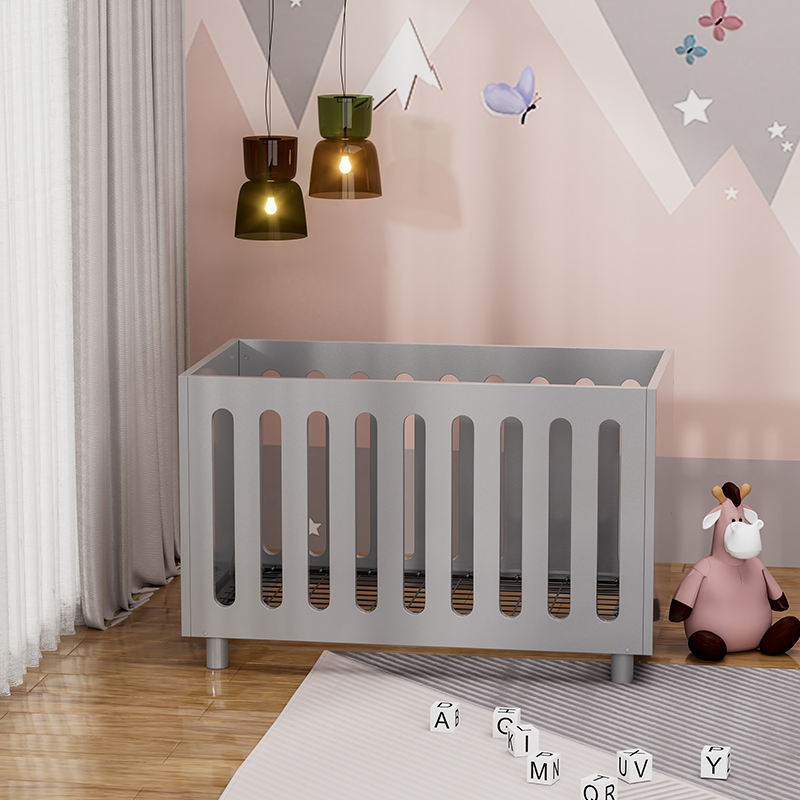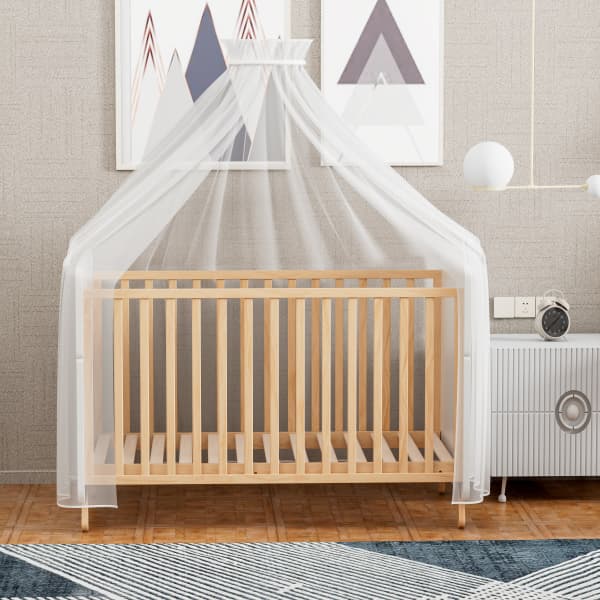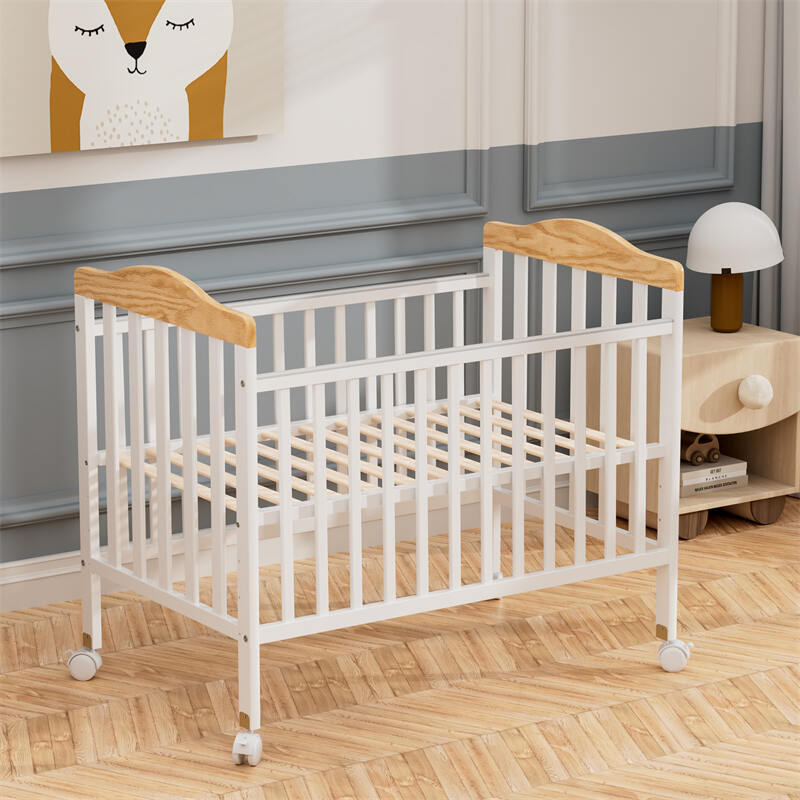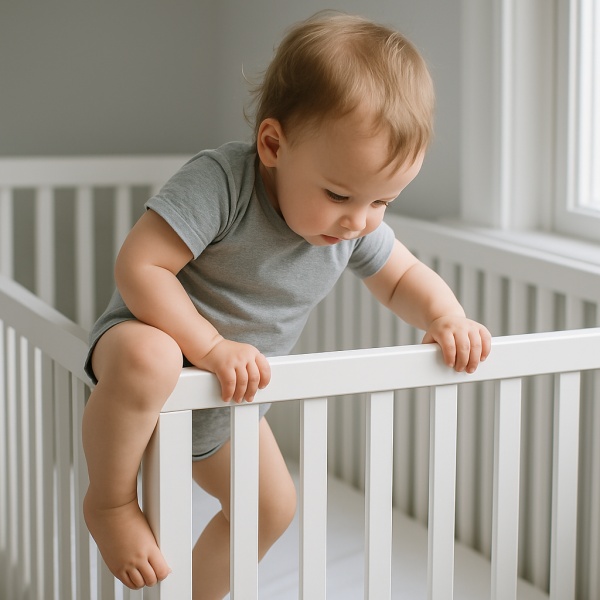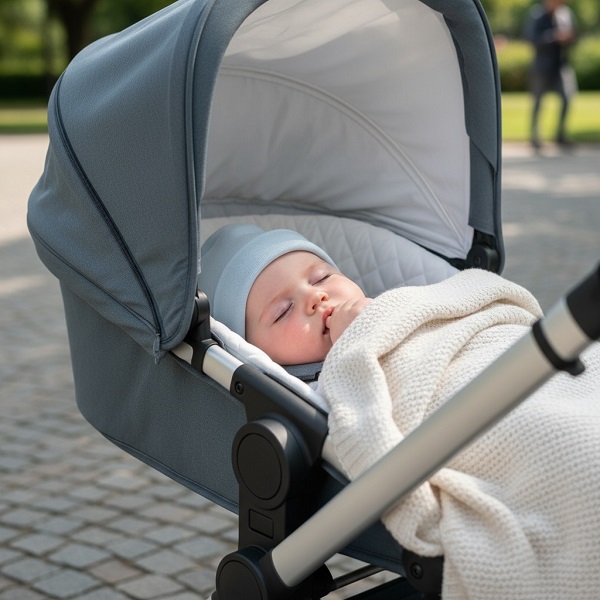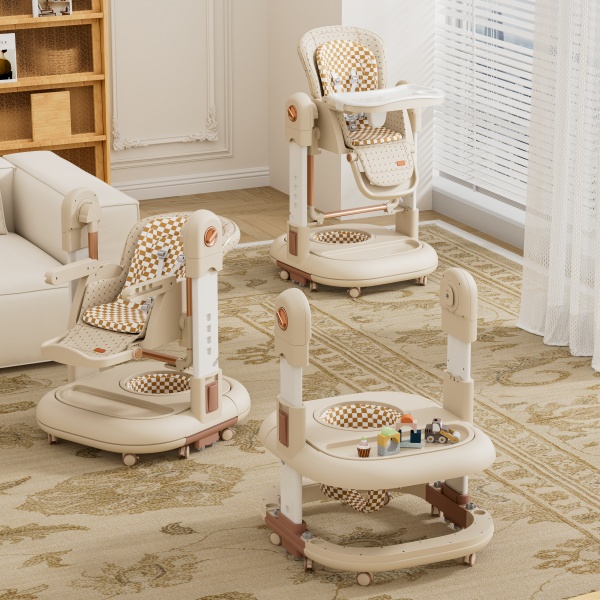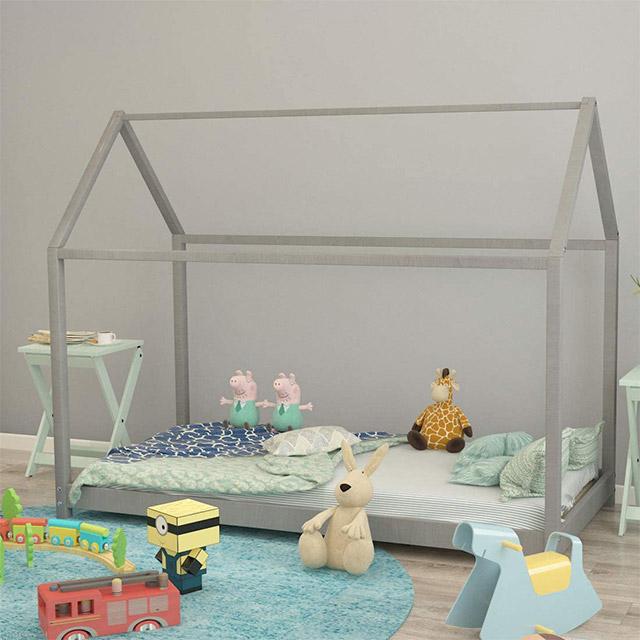You’ve poured hours into planning the perfect nursery, only to realize your snug room can’t quite handle a full-sized crib, a rocking chair, and space to move around. Sound familiar? For caregivers in compact living spaces—such as apartments, tiny homes, or shared bedrooms—a practical solution is gaining traction: the mini crib.
These compact sleep spaces are engineered to nestle into tight corners without skimping on safety or style—making them a go-to for families who want practicality and peace of mind. Think of them as the Goldilocks solution: not too bulky, not too temporary, but just right for life’s smaller footprints.
In this guide, we’ll walk you through the essentials: how mini cribs measure up, their safety certifications, and how long they’ll grow with your baby. Whether you’re optimizing a studio apartment or creating a cozy nursery nook, we’ll help you make confident, clutter-free choices.
Mini Crib: Definition and Key Features
First, let’s clarify: A mini crib isn’t merely a scaled-down replica of a standard crib. Designed for compact living, it combines the safety of a traditional crib with the space-saving practicality contemporary caregivers need.
Mini cribs typically measure 24” wide x 38” long—about the width of a yoga mat and roughly 25% shorter than standard cribs (28” x 52”). But clever engineering goes far beyond measurements.
What really makes mini cribs shine? Their chameleon-like versatility. Most models feature adjustable mattress heights (3-5 levels!), letting you lower the bed as your baby transitions from a wobbly newborn to an acrobatic toddler—a safety must that meets strict ASTM/CPSC guidelines.
While bassinets often collect dust by month six, mini cribs stick around for the long haul. They safely support babies up to 35-50 pounds (model-dependent) or until your little Houdini attempts their first crib escape.
Safety is baked into their DNA. Mini cribs must meet the same rigorous federal safety standards as full-sized cribs, including slat spacing no wider than 2.375 inches to prevent entrapment and non-toxic finishes to protect curious chewers. Some even include JPMA certification, an extra layer of reassurance for parents.
But the perks don’t stop there. Here are other what makes mini cribs a standout choice:
- Room-to-Room Freedom: Wheeled bases and lightweight frames turn nursery shuffling into a one-person job.
- Space Whisperer: Fits like a glove in studio apartments, bedroom corners, or right beside your bed for midnight feeds.
- Convertible Options: It’s hard to imagine, isn’t it? Despite its small size, it can still be used for many things. Certain mini cribs transition into toddler beds or daybeds, extending their usefulness well beyond infancy.
Mini Crib Dimensions and Space Requirements
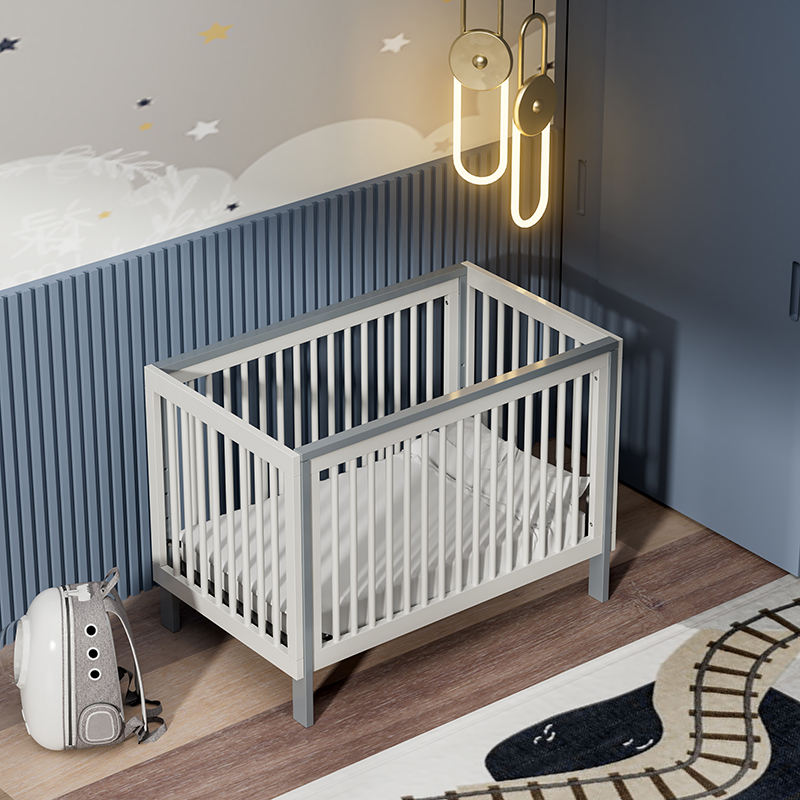
Let’s start with the numbers. Most mini cribs average 24 inches in width and 38 inches in length, though sizes can vary slightly between models. Here’s the general range you can expect:
- Length: 38–43 inches (97–110 cm)
- Width: 24–28 inches (61–71 cm)
- Height: 34–42 inches (86–107 cm)
To visualize this, imagine a piece of furniture about as long as a loveseat and as narrow as a slim bookcase. Compared to traditional cribs, which sprawl to 28” x 52”, mini cribs reclaim nearly a foot of floor space—enough to fit a diaper caddy or a small ottoman.
Where do mini cribs work best? Their streamlined design makes them perfect for unconventional spots:
- Closet nurseries (just ensure airflow and lighting)
- Corners bedside dressers or windows
- Shared bedrooms where every inch counts
For perspective, a 10’ x 10’ room can easily hold a mini crib, a compact dresser, and a cozy glider with thoughtful layout planning.
Because they’re portable and often foldable, mini cribs are ideal for secondary homes. Some models even collapse flat for under-bed or closet storage, requiring minimal permanent space.
While mini cribs are space-saving, it’s important to allow sufficient clearance space around them to ensure safety and ease of access. Leave at least 12-18 inches of space around the crib for airflow, accessibility, and safety. This ensures you can comfortably reach your baby and avoids a cramped feel.
How Long Can a Baby Use a Mini Crib?
Most mini cribs are designed to safely accommodate babies from newborns up to about 18-24 months. Unlike standard cribs that often accommodate children up to 3 or even 4 years of age, mini cribs are better suited for infants and young toddlers.
Typical Age and Weight Limits:
Age: Birth to about 18–24 months (or until those first climbing attempts begin).
Weight: Typically 35–50 lbs (15–22 kg), though some models cap at 35 lbs. Always double-check your crib’s manual—they’re not all created equal.
Key Milestones That Signal It’s Time to Transition
Rather than relying solely on age or weight, here are some developmental signs that indicate your baby may have outgrown the mini crib:
Baby Can Pull Up or Climb: The Great Crib Escape: If your little one can pull themselves up to stand or tries to scale the rails, it’s time to switch. Safety first!
Height Approaches Crib Rail Level: When standing, their chest meets the top rail—a clear sign they’ve outgrown the safe zone.
Frequent Waking or Discomfort: As babies grow taller, they may become restless in a cramped space. If your child seems cramped or unable to stretch out comfortably, it may be time to upgrade.
Exceeds Manufacturer’s Height Limit: Many mini cribs specify a maximum height limit, often around 35 inches (89 cm). Children who exceed this are typically too tall to remain safely in the crib.
What happens when they outgrow it? Don’t panic—this isn’t a hard deadline. Many families repurpose the mini crib as a cozy reading nook or gift it to a friend expecting a newborn. Others opt for convertible models with toddler rail kits, which can add another year of use.
Who Should Consider a Mini Crib?
Families Living in Small Spaces
Mini cribs are a top choice for parents who live in:
- Urban apartments
- Studios
- Tiny homes
- Shared bedrooms
At just over 6 square feet (about the size of a loveseat), a mini crib tucks neatly into corners, freeing up room for dressers, rockers, or that all-important diaper stash.
Parents Planning to Room-Share
Following the AAP’s recommendation to room-share for the first 6+ months? A mini crib slides easily beside your bed—no rearranging furniture or sacrificing nightstand real estate. Bonus: You’ll still have floor space to navigate those midnight feedings.
Multigenerational Households or Caregiver Homes
Grandparents, babysitters, or part-time caregivers who watch infants occasionally will find mini cribs to be practical and convenient. Their compact size makes them ideal for guest rooms or temporary nurseries; they’re also effortless to store or relocate as needed. In addition, affordable compared to full-size cribs.
Parents of Multiples
If you’re expecting twins or more, fitting two or more full-size cribs into a single room may be challenging. Mini cribs allow you to fit multiple cribs in the same room while maintaining safe distances
Parents Using Mini Cribs as Secondary Sleep Spaces
Even for parents who already have a standard crib, a mini crib can serve as a secondary sleep station in:
- A living room for daytime naps
- A home office for supervised sleep during work hours
- A vacation home or weekend getaway
Can Mini Cribs Use Standard Crib Mattresses?
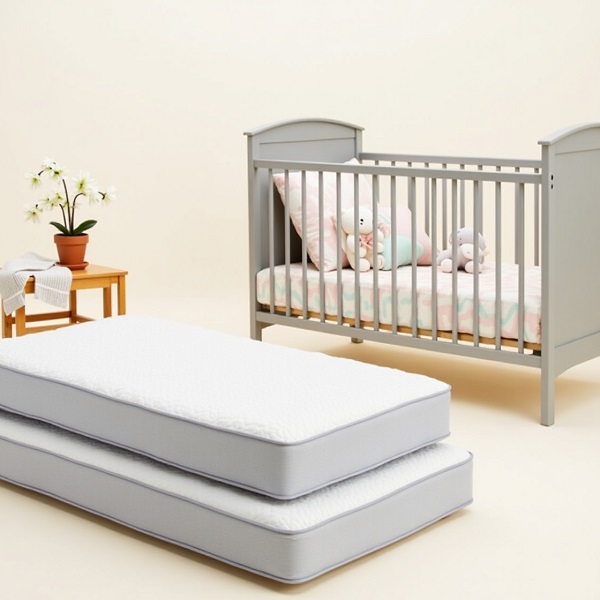
Let’s cut to the chase: No, standard crib mattresses won’t work in a mini crib—and trying to make one fit could put your baby at risk.
Mini cribs are significantly smaller in both length and width than standard cribs, and as such, they require specially sized mattresses designed to fit securely within their compact frames.
Even a slight size mismatch creates gaps between the mattress and crib rails, which can lead to entrapment or suffocation. The CPSC requires gaps no larger than 1.5 inches, but many standard mattresses fall short of this safety margin in mini cribs.
A standard mattress wedged into a mini crib might look snug, but shifting during sleep can expose dangerous spaces. Most mini crib mattresses are 5” thick, and using a thinner or thicker pad can throw off rail height calculations.
Look for mattresses labeled explicitly for mini cribs. Check your manual and manufacturers often list compatible mattresses—stick to those exact dimensions.
Resist the urge to repurpose it, even if it’s organic or high-end. Gift it to a friend with a full-sized crib, or sell it secondhand. Your baby’s safety isn’t worth the gamble.
What to Look for When Buying a Mini Crib?
Crib Dimensions & Space Compatibility
Not all mini cribs are the same size. Check the actual footprint of the crib and compare it with the space where you plan to place it. Measure the room (or parent’s bedroom if room-sharing) to ensure the mini crib fits without crowding other furniture or walkways.
Mattress Size and Included Accessories
Many mini cribs don’t include a mattress. Be sure to confirm:
- Whether a mattress is included.
- The exact internal mattress size requirement.
- Compatibility with third-party mini crib mattresses.
Adjustable Mattress Height
Mini cribs with adjustable mattress positions offer more flexibility:
- Higher levels make it easier to reach newborns.
- Lower settings improve safety as babies learn to sit or stand.
- Choose a mini crib with 2 or more mattress height positions for better long-term use.
Build Quality and Materials
Durability is essential, especially if you plan to reuse the crib for multiple children. Look for:
- Solid wood construction (like New Zealand pine or beech)
- Smooth finishes and rounded corners
- Reinforced mattress supports (metal frame or solid wood slats)
- Avoid models made from flimsy MDF or particle board.
Mini Crib Vs. Bassinet Vs. Pack ‘n Play
Mini Crib: Think of it as a compact, long-term sleep space. With sturdy frames and adjustable mattress heights, mini cribs are built for nightly use over months (or even years, with convertible models).
Bassinet: Designed for newborns, bassinets prioritize portability and proximity. They’re smaller than mini cribs and sit bedside for easy nighttime feedings.
Pack ‘n Play: This is the multitasker of the bunch. A Pack ‘n Play (or playard) typically includes a bassinet attachment for infants and a larger play area for older babies. Some models even add changing stations or storage pockets. It’s less a dedicated sleep space and more a portable hub for travel or daytime use.
Here’s a side-by-side breakdown to help you make the best choice based on specific needs.
1. Size & Portability
| Feature | Mini Crib | Bassinet | Pack ‘n Play |
| Dimensions | 23–25” W x 37–40” L | 18–20” W x 30–33” L | 28” W x 40” L (varies) |
| Portability | Moderate (some fold or roll) | Very portable, lightweight | Highly portable, foldable |
| Weight | 35–50 lbs | 10–20 lbs | 20–30 lbs |
✅ Best for small nurseries or shared rooms: Mini Crib
✅ Best for bedside newborn care & travel: Bassinet
✅ Best for multifunction use (sleep & play): Pack ‘n Play
2. Age & Weight Limits
| Feature | Mini Crib | Bassinet | Pack ‘n Play |
| Age Range | Newborn to 18–24 months | Newborn to ~4–6 months | Newborn to 2–3 years |
| Outgrown When | Baby can climb/sit up | Baby rolls or pushes up | Baby exceeds weight limit or height |
✅ Short-term solution for newborns: Bassinet
✅ Longer-term sleep option: Mini Crib or Pack ‘n Play
3. Sleep Safety & Comfort
| Feature | Mini Crib | Bassinet | Pack ‘n Play |
| Mattress Type | Firm, mini crib mattress | Thin foam or pad | Thin foldable pad |
| Breathability | Slatted sides (wood or metal) | Mesh or breathable fabric | Mesh sides |
| Sturdiness | Very sturdy | Lightweight, less stable | Moderate stability |
✅ Best sleep quality and support: Mini Crib
✅ Best for airflow and visibility: Bassinet / Pack ‘n Play
4. Functionality & Features
| Feature | Mini Crib | Bassinet | Pack ‘n Play |
| Convertible? | Some convert to toddler beds | No | No (some include bassinet/changing top) |
| Wheels? | Some models have wheels | Usually yes | Often yes |
| Foldable? | Some fold flat | Yes | Yes |
| Other Uses | Mostly sleep | Sleep only | Sleep, playpen, changing station |
✅ Best for multiple uses in one product: Pack ‘n Play
✅ Best for space-conscious parents wanting full crib features: Mini Crib
Conclusion
As we’ve seen, mini cribs aren’t just a compromise—they’re a clever workaround for modern parenting realities. These compact sleep spaces deliver big on practicality, slipping seamlessly into tight corners, shared rooms, or life-on-the-move routines.
Rest assured, they’re held to the same strict safety standards as full-sized cribs, so your little one gets security without sacrificing your square footage. And while they won’t last until preschool (let’s be real—nothing in parenting does), their 18–24-month window often aligns perfectly with life’s early chaos.
Recommended Related Articles:
- What to Look for in a Crib?
- Can Twins Sleep in the Same Crib? A Complete Guide for Parents
- How to Get Your Baby to Sleep in the Crib After Co-Sleeping?
- What Is a Convertible Crib?
- When to Lower the Crib Mattress?
- Crib Sizes: A Complete Guide
- How to Convert a Crib to a Toddler Bed?
- Crib Alternatives: What Can a Baby Sleep in Besides a Crib?
- Mini Crib Vs Crib: Which Is Best for Your Baby?
- What to Do if a Toddler Climbs Out of the Crib?

